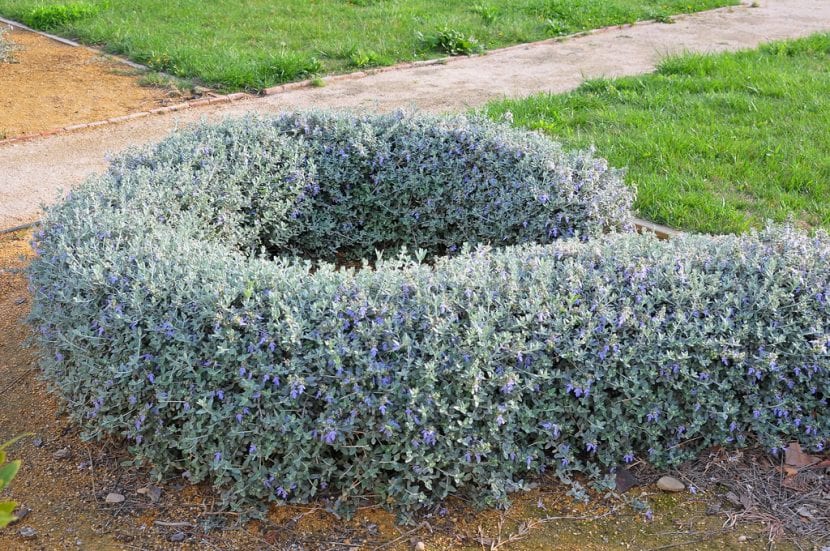
Image - Flickr / chemazgz
The Teucrium They are perfect plants for those who want to have a nice hedge in the garden, or a potted shrub that they can give some curious shape to. They tolerate pruning very well, in fact, as long as it does not go to the extreme of leaving them with nothing, they bloom without problems every year.
Apart from that, they do not require very frequent watering, which is why in areas where it does not usually rain a lot they are cultivated frequently. And if we talk about pests and diseases, it is not a subject that we have to worry too much about. So, let's get to know them better .
Origin and characteristics
It is a genus made up of about 415 species, subspecies, varieties, forms and accepted hybrids of the 1090 that are described. They are native to Europe and Africa, found in sunny expositions such as thyme trees, or forming part of the understory. They grow as perennials, biennials, annuals, shrubs, or bushes. There are many that are aromatic.
The leaves are usually persistent, petiolate, small and green or bluish-green in color. The flowers are grouped in simple or compound inflorescences of white or purple color. The fruit is dry, also small in size, ovoid or subglobose in shape, dark in color when ripe.
Main species
Teucrium fruticans
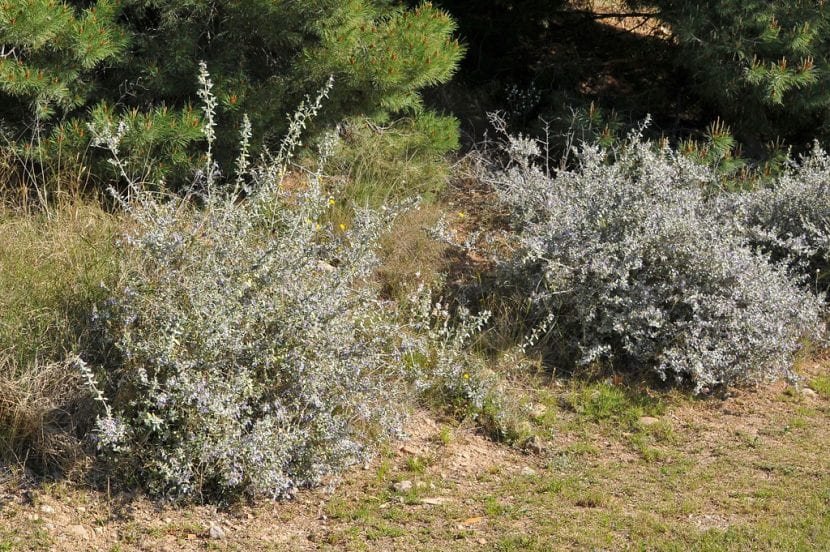
Image - Flickr / chemazgz
Known as olivilla, olivillo or bitter sage, it is an evergreen shrub native to North Africa and Southern Europe that grows between 0,5 and 2 meters in height, with a rounded and compact bearing. The leaves are opposite, lanceolate, shiny green on the upper side and whitish on the underside. It blooms in summer, producing bluish-white flowers.
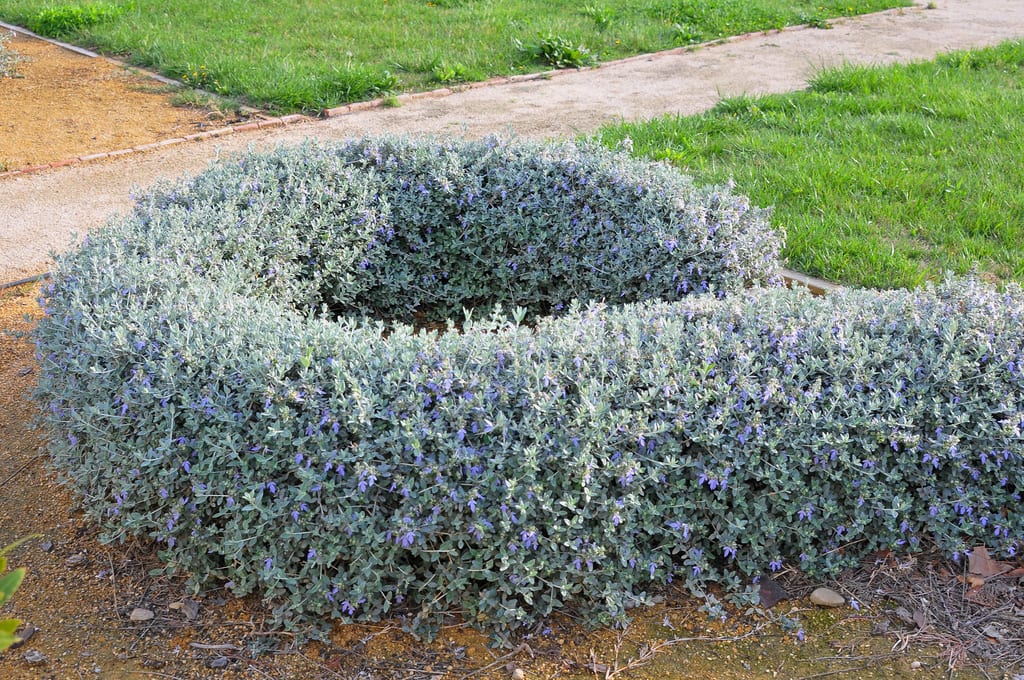
Teucrium polyum
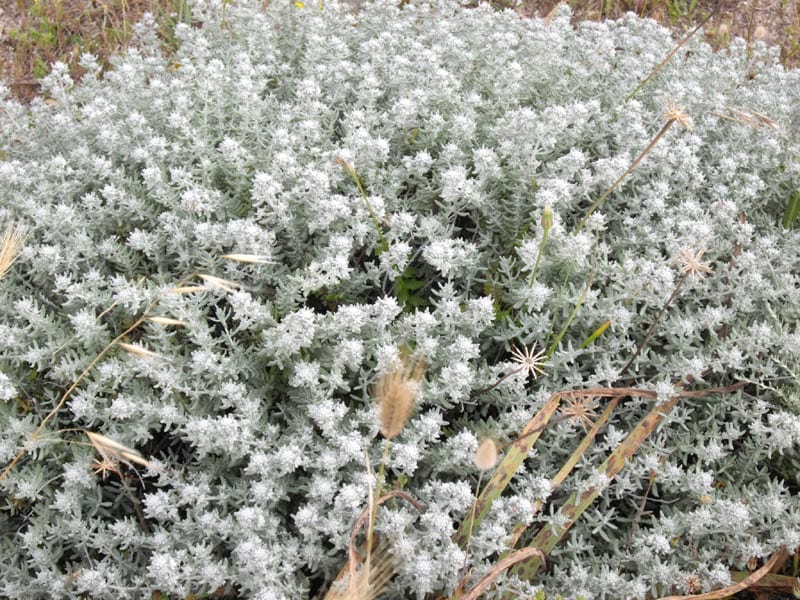
Image - Wikimedia / Ghislain118
Known as zamarilla, it is an evergreen shrub native to the Middle East and the Mediterranean that grows between 6 and 45cm tall, aromatic. The leaves are opposite, oblong to oval, and produce white or reddish flowers in spring-summer.
Both the leaves and the flowers are used in cooking and in traditional medicine to treat stomach pain and discomfort. Its properties are: carminative, antibacterial, antidiabetic, antidiarrheal and anticonvulsant.
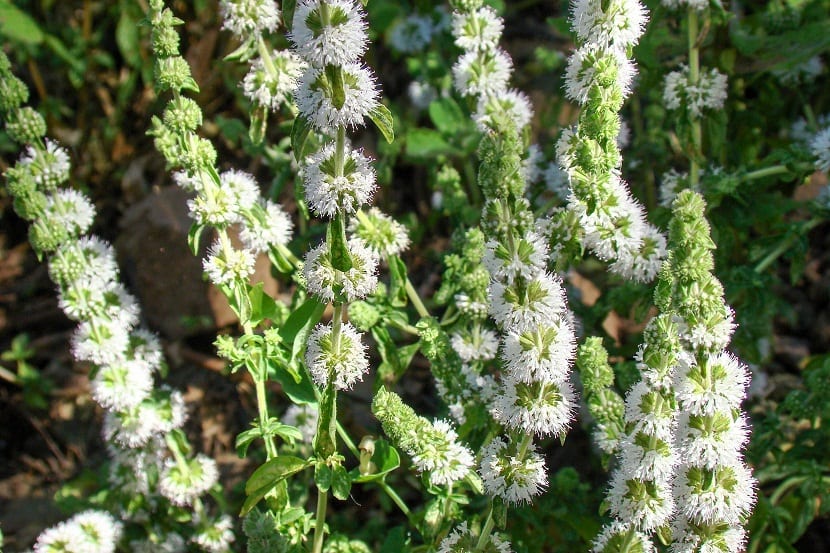
Teucrium chamaedrys
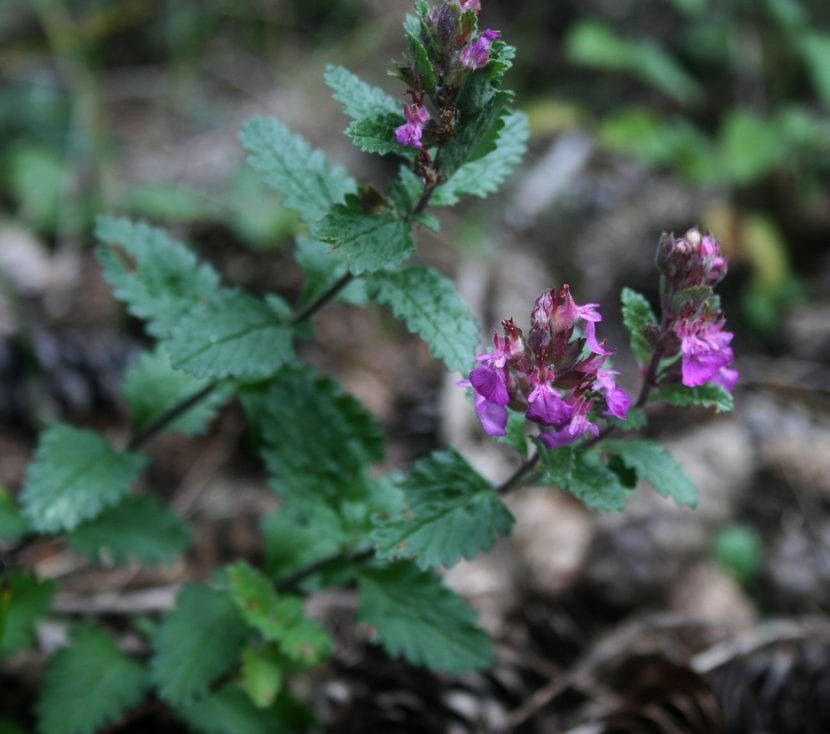
Image - Wikimedia / Franz Xaver
Known as wallflower, camaedrio, camedrio, crimson, carrasquilla, encinilla, germandrina or crimson grass, it is an evergreen herb or shrub up to 30 centimeters tall native to southern Europe. Its leaves are wide, green and give off a strong garlic smell when rubbed. It blooms from spring to mid-summer, producing lavender-pink or purple-pink flowers.
Alcoholic beverages are made with it, but it is also used as a medicinal plant as it has anti-inflammatory, antirheumatic, aromatic, astringent, carminative, digestive, diuretic, stimulant and tonic properties. Its taste is bitter.
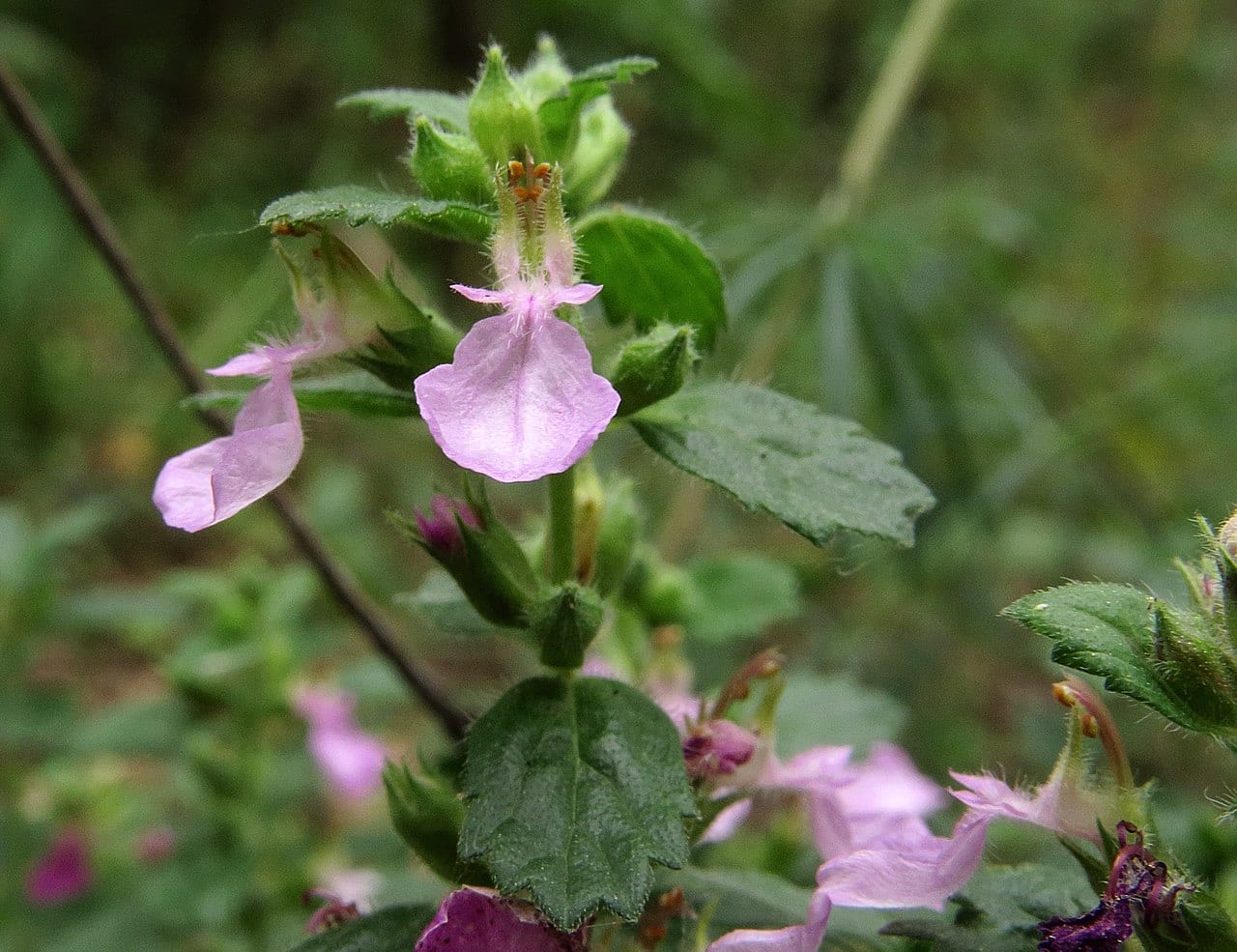
Teucrium capitatum
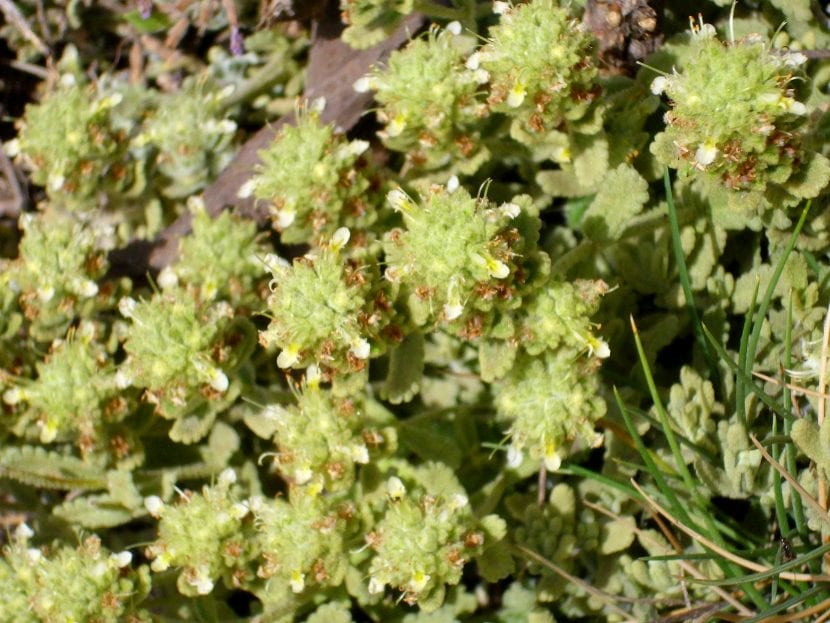
It is an evergreen bush about 35 centimeters high native to the Mediterranean region to Afghanistan that is covered in a whitish villi. The leaves are opposite, with somewhat lobed margins, and it blooms in late spring, producing pink or purple flowers.
Teucrium scorodonia
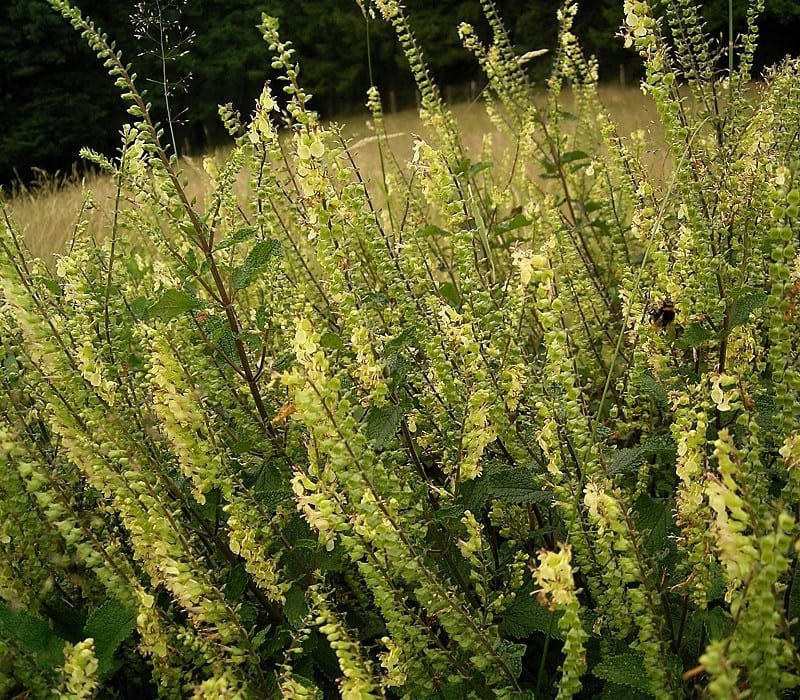
Image - Frank Vincentz
Known as scorodonia, it is an evergreen dwarf shrub that does not exceed 60 centimeters in height originally from Europe. Its leaves are triangular-ovate with a heart-shaped base, and it produces yellow-greenish, white or red flowers from late spring to summer.
Phytochemistry
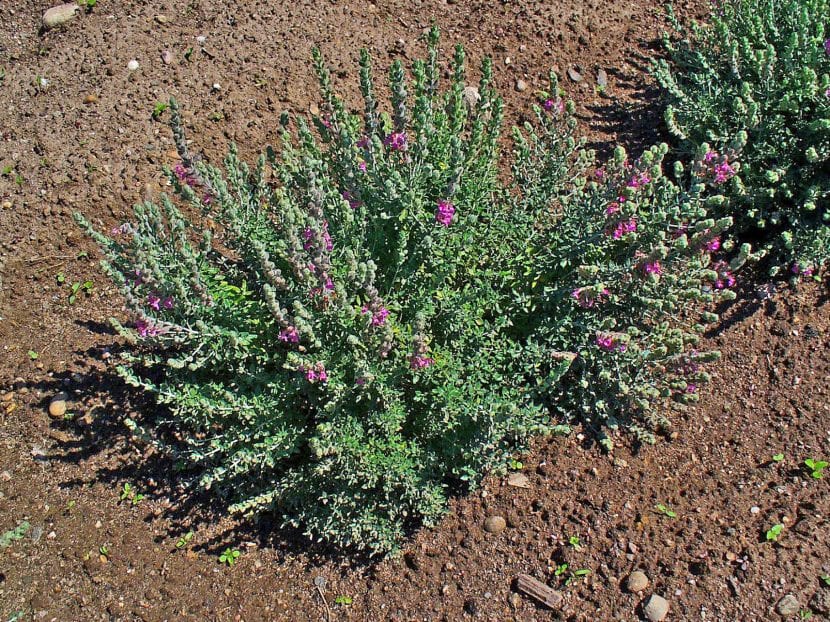
Image - Wikimedia / H. Zell
Known as cat thyme, it is an evergreen plant about 35 centimeters tall native to Spain that develops small, oval leaves. It produces very fragrant pink flowers during the summer.
Teucrium gnaphalodes
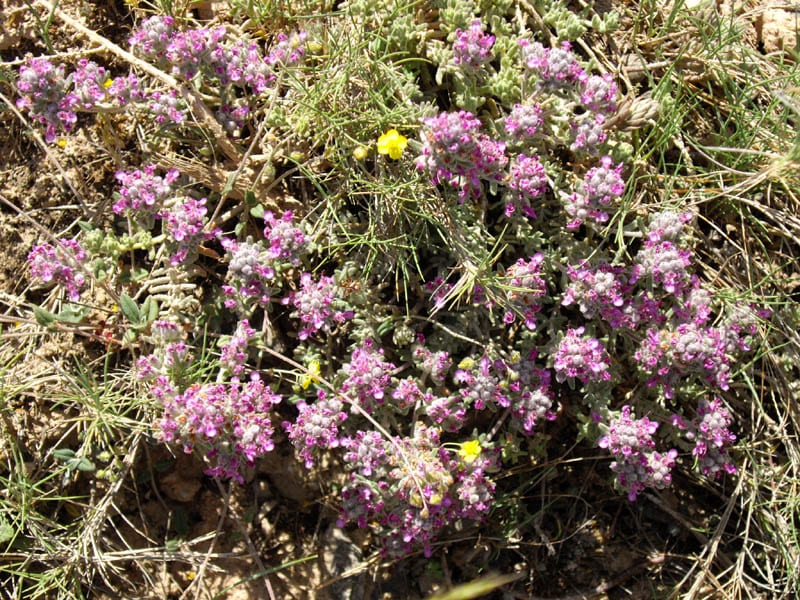
Image - Wikimedia / Ghislain118
Known as sheepskin or woolly sheepskin, it is an evergreen subshrub endemic to the Iberian Peninsula that reaches between 5 and 25 centimeters in height. Its leaves are oblong or oblong-lanceolate, and it produces pink flowers in spring and summer.
What are the care they require?
If you want to have a copy, do not hesitate to follow our advice 🙂:
Location
The Teucrium are plants that must be abroad, full sun.
Earth
It depends on where you are going to have it:
- Flower pot: fill it with universal substrate (for sale here) mixed with 20-30% perlite (for sale here). Nor would it hurt to put a first layer of clay (for sale here) or volcanic clay (for sale here) to further improve drainage.
- Garden: they are not demanding as long as the water drains well. They grow well in limestone.
Irrigation
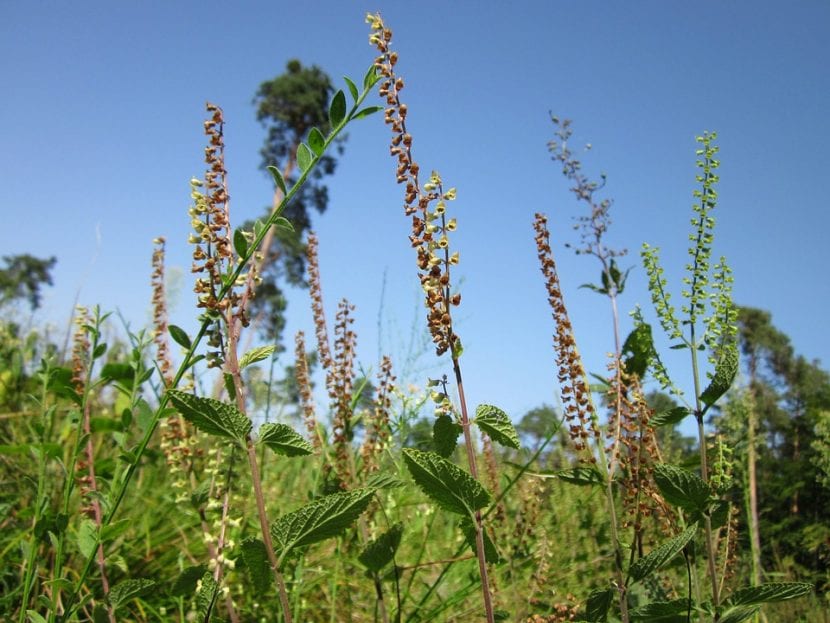
Rather moderate. Water 2-3 times a week during the hottest season, and 1-2 a week the rest.
Subscriber
From early spring to late summer fertilize it with liquid guano (for sale here), which is organic and highly effective, following the instructions specified on the package.
Pruning
In late winter, or in autumn if the frosts are very mild. Broken, diseased, weak, and dry stems should be removed, and those that are overgrown trimmed.
Multiplication
The Teucrium multiply by seed in spring and by cuttings in late summer. Let's see how to proceed in each case:
Seeds
To have a higher germination percentage, first place them in a glass of water for 24 hours. The next day, sow those that have sunk (the others are most likely not viable, although you can sow them separately just in case), in seedling trays or pots with holes with universal growing substrate mixed with 30% of perlite.
Keeping said substrate moist and placing the seedbed outside, in semi-shade, they will germinate in about 15 days.
Cuttings
If you want to multiply it by cuttings, cut a stem of about 30cm, impregnate the base with homemade rooting agents or rooting hormones (for sale here) and plant it in a pot with vermiculite (for sale here) previously moistened with water.
Planting or transplanting time
In spring, when the risk of frost has passed.
Plagues and diseases
You just have to worry about fungi, but they are easily prevented by avoiding overwatering.
Rusticity
They resist up to -5ºC.
What uses are given to the Teucrium?
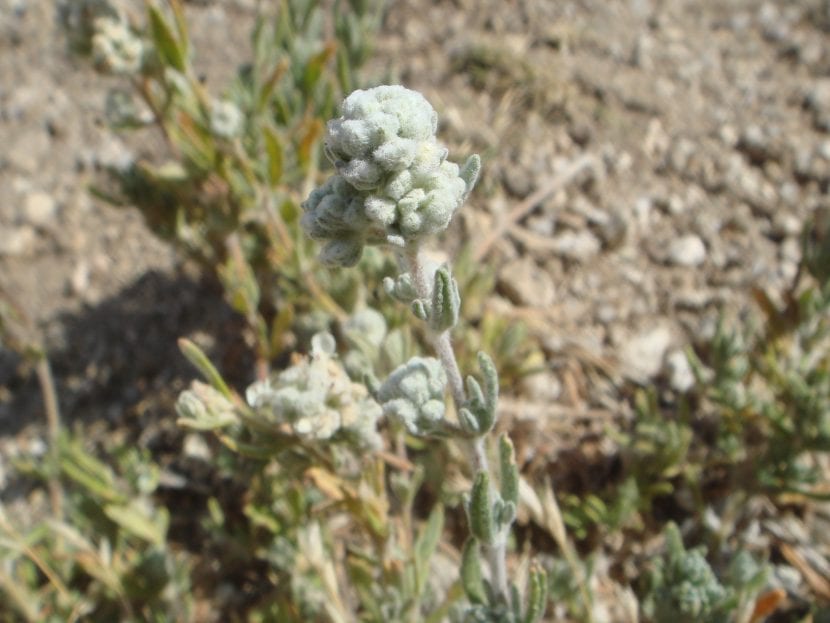
Image - Wikimedia / Xemenendura
Ornamental
It is the main use. There are many species, such as Teucrium fruticans, who they are used for borders, low and medium hedges, or for growing in pots. The bushes can even be worked as bonsai, as they have small leaves and are very resistant to pruning.
Medicinal
As we said before when we talked about the main species, there are some that have interesting medicinal properties, such as Teucrium polyum.
What do you think of these plants?